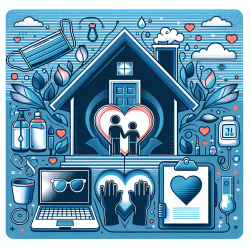Introduction
Understanding the dynamics of anxiety in the classroom is crucial for educators and practitioners aiming to create supportive learning environments. Recent research titled "Anxiety in the Classroom: Only Girls’ Anxiety Is Related to Same-Sex Peers’ Anxiety" provides valuable insights into how peer interactions influence anxiety levels, particularly among girls. This blog explores the findings of this study and offers practical guidance for educators to enhance their skills and encourage further research in this area.
The Study: Key Findings
The study conducted by Charbonneau et al. (2022) involved 1044 Canadian students from elementary and high schools. The researchers aimed to assess the relationship between a student's state anxiety and their classmates' trait anxiety, focusing on differences between boys and girls. The findings revealed a significant association between girls' state anxiety and the trait anxiety of their same-sex peers, while no such association was found for boys.
This suggests that girls are more susceptible to anxiety influences from their female peers, highlighting the importance of considering gender dynamics in educational settings. The study also found that this association was consistent across different age groups, indicating that the impact of peer anxiety is pervasive throughout adolescence.
Implications for Educators
For educators, these findings underscore the need to be aware of the social dynamics in their classrooms. Here are some strategies to consider:
- Create a Supportive Environment: Foster an inclusive and supportive classroom atmosphere where students feel safe expressing their emotions. Encourage open discussions about anxiety and mental health to normalize these experiences.
- Promote Positive Peer Interactions: Facilitate activities that promote collaboration and empathy among students. This can help mitigate the negative effects of peer anxiety by strengthening supportive peer relationships.
- Monitor Peer Dynamics: Pay attention to the interactions among students, especially among girls, and intervene when necessary to prevent the spread of anxiety-inducing behaviors.
- Provide Resources: Offer resources and support for students struggling with anxiety. This could include access to counseling services or workshops on stress management techniques.
Encouraging Further Research
While this study provides valuable insights, it also highlights the need for further research to explore the mechanisms behind these gender-specific differences in anxiety dynamics. Future studies could investigate the role of social norms and cultural factors in shaping these interactions. Additionally, examining the impact of opposite-sex peer influences on anxiety could provide a more comprehensive understanding of classroom dynamics.
Conclusion
By understanding the complex interplay of peer influences on anxiety, educators can better support their students' mental health and well-being. Implementing data-driven strategies based on research findings can lead to more effective interventions and positive outcomes for students. As we continue to explore this field, the insights gained will be instrumental in shaping educational practices that prioritize mental health and emotional well-being.
To read the original research paper, please follow this link: Anxiety in the Classroom: Only Girls’ Anxiety Is Related to Same-Sex Peers’ Anxiety.










